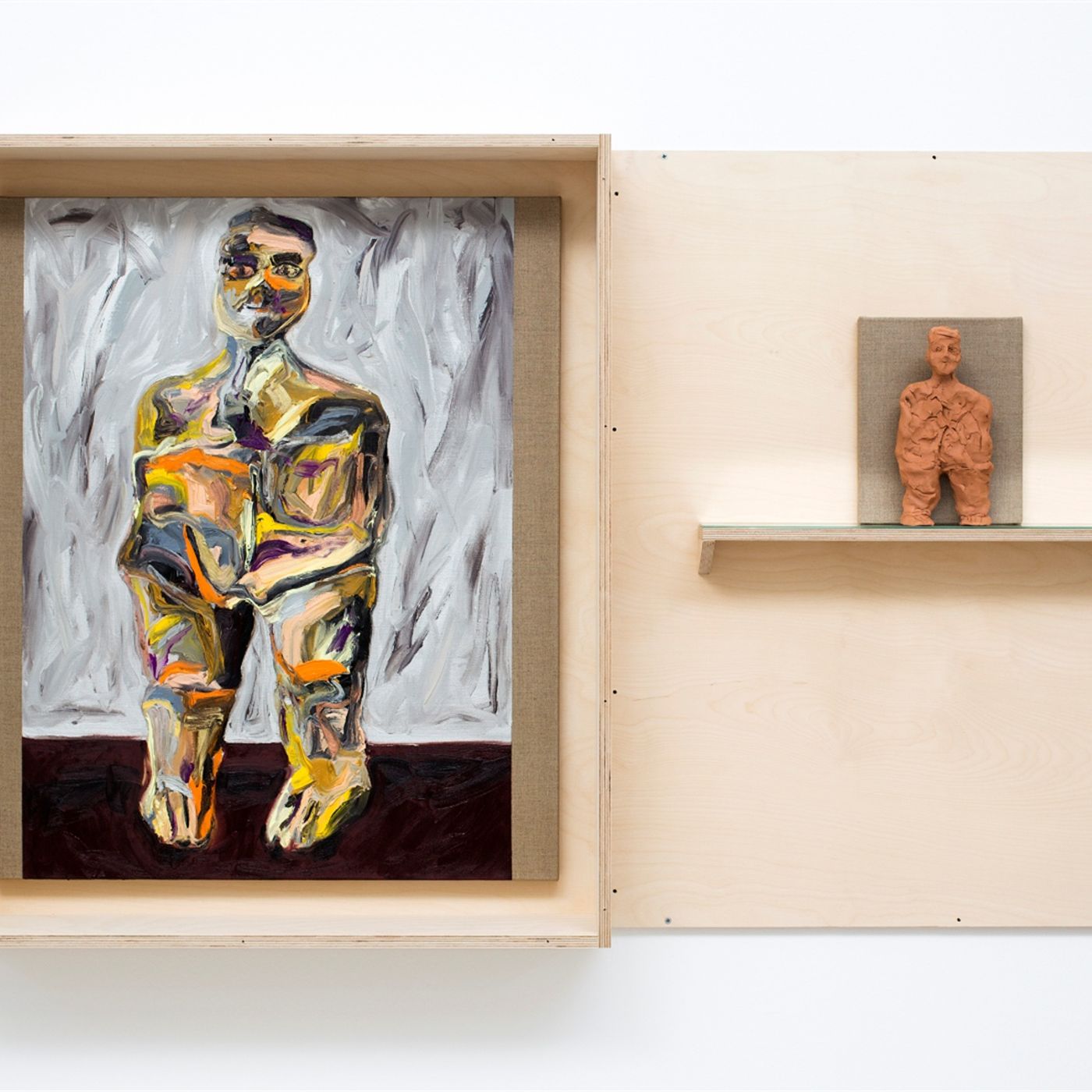Museo delle Genti d'Abruzzo - Focus
- Author
- eArs
- Published
- Wed 25 Jun 2025
- Episode Link
- https://www.spreaker.com/episode/museo-delle-genti-d-abruzzo-focus--66746577
All this began such a long time ago, the human search for the figure as antithesis of the simulacrum: the cry, the lament, the discovery of the soul, the hand is more alive than the spirit, it creates the form before the thought. This sculpture is 9000 years old and was discovered in Jordan in 1972.
The title of this work is, in itself, a narrative—one that offers clues to understanding the artist’s point of view. It reads:
“All this began such a long time ago, the human search for the figure as antithesis of the simulacrum: the cry, the lament, the discovery of the soul, the hand is more alive than the spirit, it creates the form before the thought. This sculpture is 9000 years old and was discovered in Jordan in 1972.”The diptych depicts the same subject using two different techniques: a Neolithic statue, one of the earliest known representations of the human form.
This work appears to be an inquiry into the origins of representation, not in a symbolic sense, but in pursuit of truth: the figure as antithesis of the simulacrum
Fato explores this primordial image through painting and sculpture. It should be borne in mind that, for the artist, every technique - including sculpture - is always considered in relation to painting. Other techniques are like tools for approaching painting from a renewed perspective.In the context of the Museo delle Genti d’Abruzzo, the use of ceramic also establishes a link with a local artistic tradition of renowned quality: Castelli ceramics, which are well represented in the museum’s collection.
Simone Ciglia: You created this work for an exhibition I curated in the summer of 2020 at the Malvina Menegaz Foundation in Castelbasso, in the province of Teramo. It was titled: “La forma della terra: geografia della ceramica contemporanea in Italia”. That was your first time working with the medium of ceramics.
Matteo Fato: Yes, it was essentially a first time on many levels.
In painting, you're always chasing that first time. In this case, it all came about naturally and by chance. It started with the memory of something I came across in 2012, during a residency at the Dena Foundation in Paris.
You came to visit me there, remember? One day we went to the Louvre, where the original version of this statue is housed.
I came across the same statue again in a remarkable documentary by Aleksandr Sokurov, Francofonia. The title of this work is simply what Sokurov says in the documentary, right when the statue appears. And in a way, that line expresses what one does—or at least what I do, or try to do—when painting.
In a way, it’s an attempt to recover the oldest image in one’s memory and transform it into the present.
